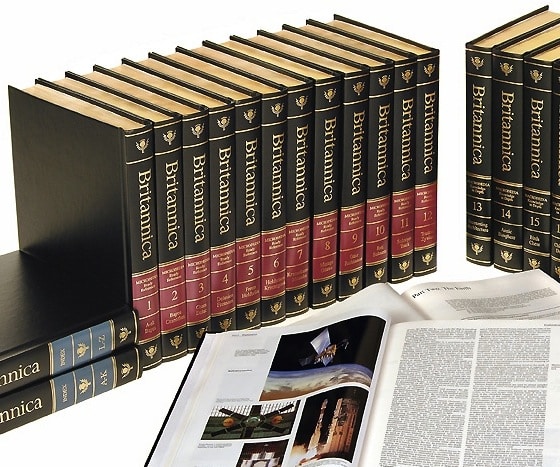
At a conference last week, an Encyclopaedia Brittanica executive rose from the floor to challenge keynoter Jimmy Wales of Wikipedia.
“I don’t want to be accused of killing Britannica,” Wales told Britannica UK MD Ian Grant from the stage. “There’s no danger of that,” Britannica’s Grant assured him.
Just a week later, Wikipedia’s entry for Britannica itself is already updated to read: “On March 13, 2012, Encyclopaedia Britannica announced the 2010 edition will be the last printed version. Sales will continue only until current stock is sold out.”
The announcement, which comes along with a series of blog posts from Britannica executives, ends 244 years in print for the tome founded in Edinburgh, and leaves Britannica to focus only on its digital publishing outlets.
Britannica print sales peaked in 1990 but Encarta’s launch three years later hurt it. Britannica debuted its own CD-ROM version for $995 or free with the print edition, introduced a website with $2,000 subscription in 1994 and discounted its CD-ROM to just $200 two years later.
BBC News via Wikipedia: “Only 55,000 hard copy versions were sold in 1994, compared with 117,000 in 1990, and sales later fell to 20,000.” Digital became the majority of the company’s revenue in 2006; many news and magazine publishers are only now reaching that point. President Jorge Cauz via BBC News: “The sales of printed encyclopaedias have been negligible for several years. We knew this was going to come.”
RT @Rishadt: Brittanica makes 35M a year from online sales & only 5M a year from print so it is digital before it stopped printing.
— Staci D Kramer (@sdkstl) March 14, 2012
Abandoning print means one less point to defend against Wikipedia. Nevermind print versus digital anymore; now it is only crowdsourced amaterism versus professional editing, and free versus paid.
The publisher is now trumpeting what it says is an equally illustrious history in digital publishing, which began in 1981 by creating a digital encyclopaedia for Lexis Nexis and now includes a $1.99-a-month iPad app edition since 2011; apps for kids; and specialised reference sites for various education grades, libraries and researchers.
President Jorge Cauz writes: “By concentrating our efforts on our digital properties, we can continuously update our content and further expand the number of topics and the depth with which they are treated without the space constraints of the print set.
“In fact, today our digital database is much larger than what we can fit in the print set. And it is up to date because we can revise it within minutes anytime we need to, and we do it many times each day.”
But, when people think “online encyclopaedia”, Britannica is not necessarily the one that comes to mind. And many users will recognise Wikipedia as already embodying many of the digital and online qualities Cauz now champions.
Clearing the decks of print allows Britannica to focus, but it will have to work hard to drive awareness of its digital offerings. To start, Britannica.com, which costs £49.95 per year or £6.99 per month, will go free for a week-long showcase.
“The company has a worldwide network of thousands of expert contributors and a staff of more than 100 editors who edit, review and fact-check Britannica content to make sure it’s accurate, reliable and up-to-date,” Britannica says.
This, of course, is just the latest in an accelerating trend of publishers – compelled by print’s worsening outlook, new online business opportunities and the migration of audiences to digital – going digital-first and, increasingly, digital-only.